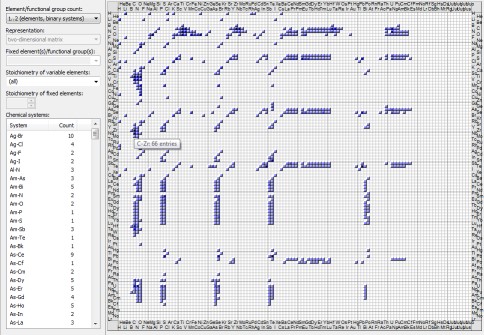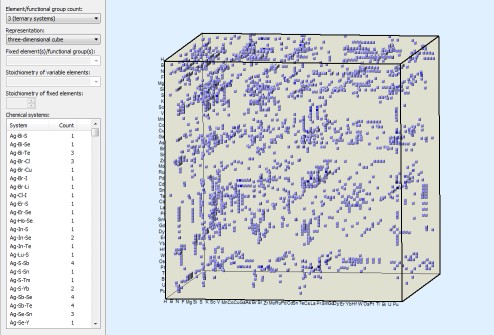Pearson's Crystal Data Features: Chemical system matrix
Features overview
Previous: Phases list
Next: Radii/volumes diagram
The Pearson's Crystal Data software offers a special view of binary as well as multinary
data called "(chemical) system matrix". It provides an overview of how many entries
of the current answer set
belong to a certain chemical system.
The screen shot shows the two-dimensional system matrix for the NaCl prototype,
where the elements are sorted for atomic numbers.

The elements can be sorted in alphabetical order, for atomic number, periodic number,
atomic size, atomic reactivity, and melting temperature. (For details, see: P. Villars,
J. Daams, Y. Shikata, K. Rajan, S. Iwata, "A new approach to describe elemental-property
parameters", J. Alloys and Compounds, accepted for publication (2006).)
Ternary systems can be displayed in a 2D matrix, too, if one of the elements is
pre-selected as "fixed element". The third part can also be a functional group rather
than an element, e.g. "[SO4]".
A three-dimensional representation as cube is available for ternary systems or quaternary
systems with a fixed element or functional group. For all representations, you can
also select the stoichiometric ratio.

Features overview
Previous: Phases list
Next: Radii/volumes diagram
|

